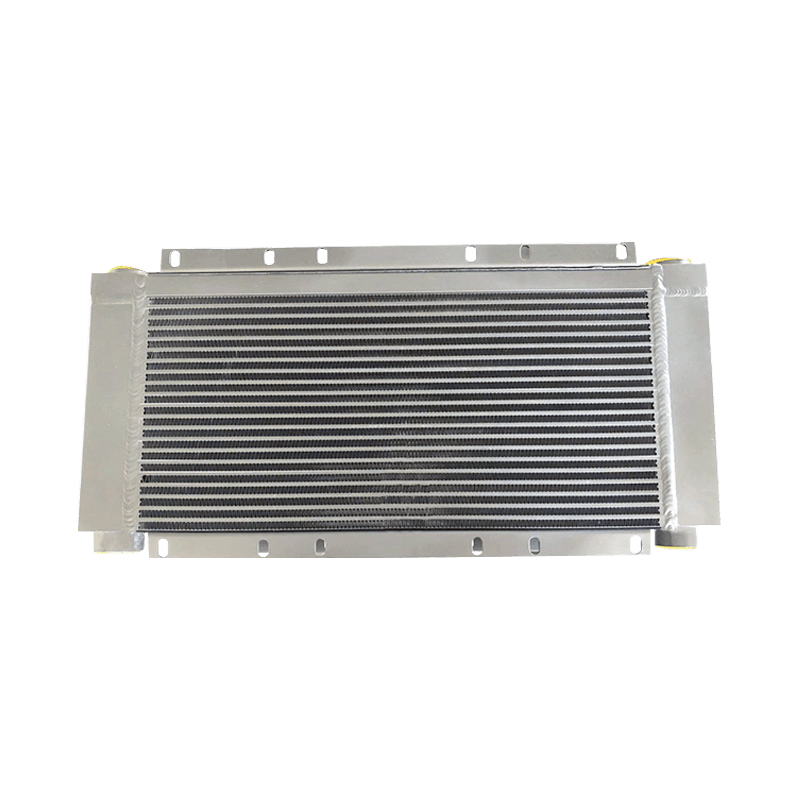 +86-13812067828
+86-13812067828
In Plate Fin Heat Exchanger, the balance between heat exchange efficiency and pressure drop is a key design challenge. Usually, there is an antagonistic relationship between heat exchange efficiency and pressure drop, namely:
Improving heat exchange efficiency usually means increasing the heat exchange area or enhancing the turbulent characteristics of the fluid, which will increase the friction resistance of the fluid, resulting in an increase in pressure drop.
Reducing pressure drop usually requires reducing flow resistance, such as increasing the flow path of the fluid, reducing the area of the fins, or changing the flow channel design, which may lead to a decrease in heat exchange efficiency.
How to balance the contradiction between heat exchange efficiency and pressure drop:
Optimize fin design
Fin shape and arrangement: The shape, thickness, spacing and arrangement of the fins directly affect the flow and heat exchange efficiency of the fluid. For example, using wavy fins or spiral fins can increase the turbulence of the fluid, improve heat exchange efficiency, and make the flow path more complex, thereby improving fluid distribution. However, such a design often increases pressure drop, so it is necessary to find a suitable fin design based on the specific requirements of the system.
Selection of fin spacing: Increasing the fin spacing can reduce fluid resistance and thus reduce pressure drop, but too large a spacing will reduce the heat exchange area and affect heat exchange efficiency. Therefore, the fin spacing should be optimized according to the heat load demand and fluid flow rate.
Flow channel design and optimization
Design of fluid flow path: In a plate-fin heat exchanger, the length and complexity of the fluid path will affect the pressure loss of the fluid. When designing, try to make the fluid flow path increase the heat exchange area without increasing too much flow resistance. For example, a staggered flow channel design can be used to increase the contact area between the fluid and the fin while maintaining a low pressure drop.
Parallel and series flow channel combination: By reasonably combining parallel and series flow channels, the heat exchange efficiency can be maximized while maintaining a low pressure drop. Parallel flow channels can reduce the resistance of the fluid passing through each channel, while series flow channels help to increase the heat exchange area.

Fluid selection and optimization
Fluid properties: Selecting a suitable working fluid, especially considering the fluid's viscosity, density, and thermal conductivity, has an important impact on controlling heat exchange efficiency and pressure drop. Generally speaking, low-viscosity fluids have a smaller pressure drop when flowing in a heat exchanger, but their thermal conductivity may be lower, which may result in poor heat exchange efficiency. In contrast, high-viscosity fluids can improve heat exchange efficiency, but are prone to increase pressure drop. Therefore, it is necessary to select the appropriate fluid according to the specific application scenario.
Use multi-fluid system
Multi-fluid heat transfer: In some applications, the pressure drop in each fluid channel can be reduced by introducing multi-fluid heat transfer. For example, a split flow design can be used to make different fluids flow in different flow channels to optimize the pressure drop and heat exchange effect.
Reasonable control of flow rate
Optimization of flow rate: The greater the flow rate, the stronger the turbulence effect, the higher the heat exchange efficiency, but at the same time the pressure drop also increases. Therefore, it is very important to choose the flow rate reasonably. Usually, the flow rate of a plate-fin heat exchanger is adjusted between 1.5 and 4 m/s. By optimizing the flow rate through numerical simulation and experiment, a balance can be found between heat exchange efficiency and pressure drop.
Use efficient heat exchange surfaces
Control of surface roughness: By designing and enhancing the surface (such as roughening the surface, spraying or covering with special coatings), the heat transfer capacity of the heat exchanger surface can be increased, the thermal resistance can be reduced, and the heat exchange efficiency can be improved, while the pressure loss of the flow can be controlled to a certain extent.
Optimizing the size of the heat exchanger
During the design, the heat exchange area can be increased by increasing the size of the heat exchanger (increasing the number of fins and the length of the flow channel), but too large a size may result in excessive pressure drop. Size optimization requires finding the best point between the heat exchange demand and the allowable pressure drop.
To balance the contradiction between heat exchange efficiency and pressure drop, it is necessary to comprehensively consider factors such as fin design, flow channel optimization, fluid selection, and flow rate control. Through numerical simulation, experimental verification and system optimization, the pressure drop can be controlled within an acceptable range while meeting the heat exchange requirements. This optimization is usually an iterative process that requires continuous adjustment and improvement in practical applications.